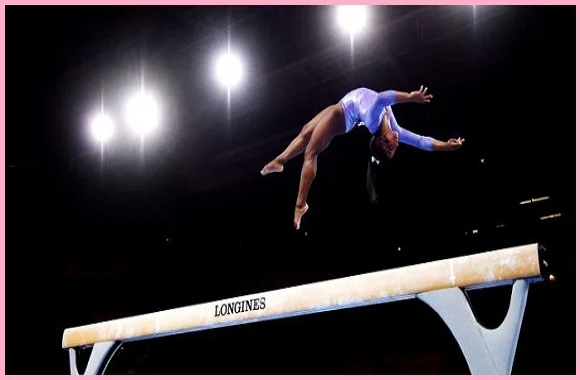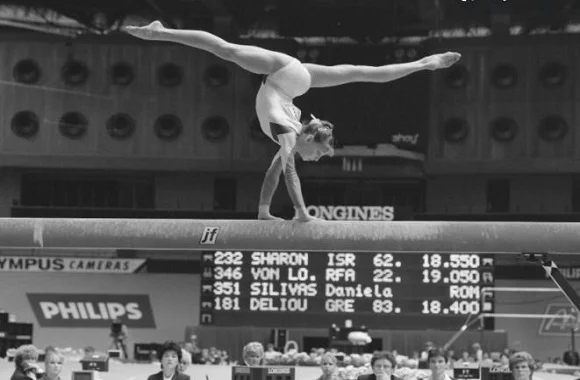The balance beam is a long, narrow piece of wood that is used in gymnastics. It is one of the most popular events in the Olympics because it requires an incredible amount of skill to complete. To be successful in sports, you must have a strong base and keep your body aligned from head to toe.
If you can do this, then you’ve met half of the requirements for success in the sports. The main thing to remember is that it’s all about balance when it comes to gymnastics. If you’re able to maintain that balance, then you’ll be able to execute your skills.
History of Balance Beam
The Gymnastic was first introduced to the modern Olympics in the 1960s. The first time of the Beam was used was in the sport of gymnastics. It was a very popular event for men and women to compete in early 2000, but, now the popularity is decreasing some. Originally, the balance beam was made out of wood. It was later made out of metal, and it was made so that it could be adjusted so that it could be used for both men and women.

Beam began to increase affectedly in the 1970s. Nadia Comăneci and Olga Korbut pioneered advanced tumbling combinations on the beam. Now, Simone Biles is popular in sports.
Rules of the Balance Beam Gymnastics
As far as the rules of the sport, it is a gymnastics event that requires you to balance on a beam. The beam that you will be balancing on is 10 feet long and 8 inches wide. Equipment Needed To Perform on a Beam As far as the equipment needed to perform on a balance beam, you will need a gymnastics mat. The gymnastics mat is used to help you balance yourself and to protect you from injury.
The Rules of the Beam in gymnastics can be summarized as follows:
- Mounting: Gymnasts begin their routine by mounting the balance beam using a variety of techniques such as jumps, turns, or acrobatic elements. The mount should demonstrate control and poise.
- Required elements: Gymnasts are required to perform a series of specific elements on the balance beam, which can include jumps, leaps, turns, and acrobatic skills. These elements must meet certain technical and artistic requirements outlined by the governing body.
- Connections: Gymnasts must connect different skills seamlessly without interruptions or additional steps between them. Connecting elements smoothly demonstrates fluidity, rhythm, and skill mastery.
- Execution and technique: Judges evaluate the execution and technique of each skill performed on the balance beam. Points are awarded based on factors such as form, body alignment, balance, precision, and control. Proper execution with grace and precision is crucial for maximizing scores.
- Difficulty and composition: Gymnasts are encouraged to include a variety of difficulties in their routine. Adding more challenging skills and combinations increases the potential score.
- Time limit: Gymnasts must complete their routine within a specified time limit, typically around 90 seconds. Going over the time limit can result in deductions.
- Artistry and expression: Gymnasts are encouraged to incorporate artistry, expression, and individual style into their routine. The use of dance elements, expressive movements, and personal flair adds to the overall performance and can enhance scores.
- Dismount: The routine concludes with a dismount, where gymnasts perform a final skill to dismount from the sport. The dismount should demonstrate control, height, and a safe landing.
It’s important to note that the specific rules and requirements for balance beam routines may vary depending on the level of competition and the governing body.
Equipment
Mat, Also, you will need a beam. The sports is the surface that you will be performing on. Equipment of balance beam As far as equipment of the balance beam, it is a wooden beam that is 10 feet long and 8 inches wide.
A: If you can’t use equipment, you’ll have to assume that the song will last for at least 5 minutes. The basic requirement is that you have to be able to balance. For that, you need a mat.
- Balance Beam: The primary equipment is the balance beam itself, which is a narrow, elongated apparatus raised approximately 125 centimeters (4 feet) from the ground. The beam is typically 5 meters (16.4 feet) long, 10 centimeters (4 inches) wide, and covered with a suede-like material to provide grip and traction for gymnasts.
- Padding: To ensure safety, mats or padding may be placed around the base of the balance beam to provide cushioning in case of falls or dismounts. These mats offer protection and reduce the risk of injuries during training and competitions.
- Mounting Block: A mounting block or podium may be provided to assist gymnasts in safely mounting and dismounting the balance beam.
- Spotting Belt: During training, gymnasts may use spotting belts as a safety precaution. These belts are worn around the waist and are attached to an overhead support system.
- Chalk: Gymnasts often use chalk to improve their grip on the balance beam. Chalk powder is applied to the hands and feet, reducing moisture and increasing friction to enhance control and prevent slipping.
Dimensions of the sports
Fédération Internationale de Gymnastique dimension has given below.
Height: 125 centimetres (4.10 ft).
Length: 500 centimetres (16 ft).
Width: 10 centimeters (3.9 in).
In conclusion
The maximum time allowed under FIG rules for a Balance Beam timetable is 1:30 minutes. This routine is proclaimed on the scoreboard timer, which is observable to both judges and gymnasts. I think this all information is okay for knowing details.
Read also another sport
and more.










